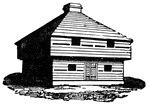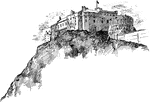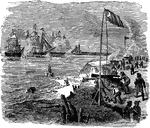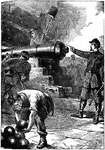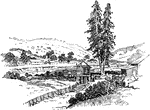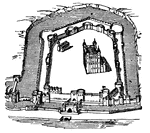Clipart tagged: ‘fort’
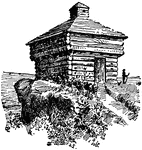
Blockhouse
Blockhouses, built of heavy logs with the second story overhanging the first, were created for defense…

First Minnesota Regiment
"Fort built around the officer's quarters of the First Minnesota Regiment, Colonel Sully, near Fair…

Fort Chambly
Fort Chambly at the foot of the Chambly rapids on the Richelieu River in Quebec, Canada, was built by…

Fort Jefferson
An illustration of Fort Jefferson which is located today in what is Dry Tortugas National Park. Dry…
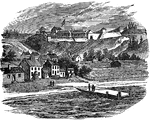
Fort Mackinaw
Fort Michilimackinac or Fort Mackinaw was an 18th century French, and later British, fort and trading…

Fort Macon
"Surrender of Fort Macon, GA., April 26th, 1862. Exterior on side facing the Federal Batteries, showing…

Fort York
The fort was built by the British Army and Canadian militia troops in the late eighteenth and early…

Fortification
A fortified building situated between two sharp hills at the edge of a lake. Two men are launching a…
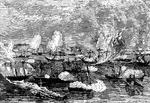
Passage of Forts Jackson and St. Phillip
Depiction of the battle on the Mississippi between Confederate and Union forces at Forts Jackson and…

Forts Pickens and McRae
Fort Pickens is a pentagonal historic United States military fort on Santa Rosa Island in the Pensacola,…

Headquarters of General Butterfield
"Headquarters of General Butterfield, near Harrison's Landing, James River, Va." —Leslie, 1896

Fort Hatteras
View of the camp of the twentieth Indiana Regiment; also of Fort Hatteras and the anchorage at Hatteras…

Mackinaw from Round Island
Fort Michilimackinac or Fort Mackinaw was an 18th century French, and later British, fort and trading…

Fort Pulaski
Fort Pulaski, on Cockspur Island at the entrance to the Savannah River, Georgia, was built by the United…

Rolla Camp
"Encampment of the Federal army near Rolla, Mo. The city of Rolla has been famous since the death of…
Covered Sap
In military affairs, a narrow ditch or trench by which approach is made to a fortress or designed place…
Double Sap
In military affairs, a narrow ditch or trench by which approach is made to a fortress or designed place…
Rectangular Sap
In military affairs, a narrow ditch or trench by which approach is made to a fortress or designed place…
Single Sap
In military affairs, a narrow ditch or trench by which approach is made to a fortress or designed place…

Remains of the Western Battery in 1860
The Western Battery was built by the British Army. With ample supply of trees from the surrounding area…
